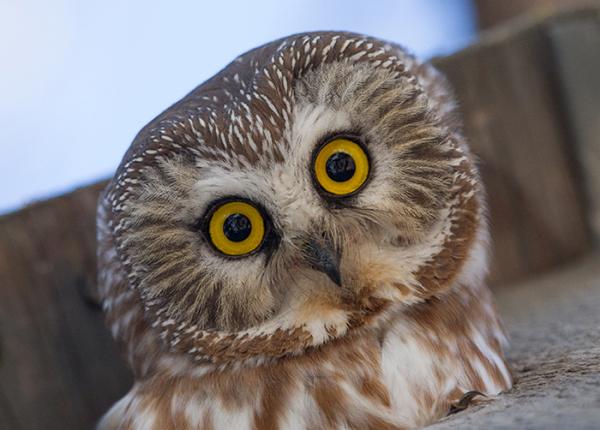From The Raptor Center
Glimpse into the Glow.
When we recently admitted a young great horned owl, we broke out the black light to take a quick look at its feathers under ultra violet (UV) ight. Why? The pink glow can help us confirm the ow’s age. We know this is a bird in its first year of life because all of its wing flight feathers are glowing pink. The glow comes from proteins in new feathers called porphyrins. Under UV light, these porphyrins are fluorescent and visible to the human eye.
As feathers age, these pigments break down and the pink color subsides. The only time all of the feathers are new is when a bird gets its very first set of feathers. As these birds age, they only molt a few flight feathers each year, leading to uneven amounts of pink in older birds.
While we know that owls don’t have UV-sensitive cone cells in their eyes like diurnal birds, research shows that they can still detect UV light. There is no definitive answer as to the purpose behind the fluorescence of new feathers; however, it possibly conveys important information between owls in the wild.
It’s worth noting that the majority of animals can see in the ultraviolet light spectrum, meaning humans inability to do so is an exception and not the standard. How do you think UV vision would change the way we see our world?
Link has a video if you want to see more feathers glowing, but there’s no talking or text beyond what’s above here.


Time waits for no owl… 😜